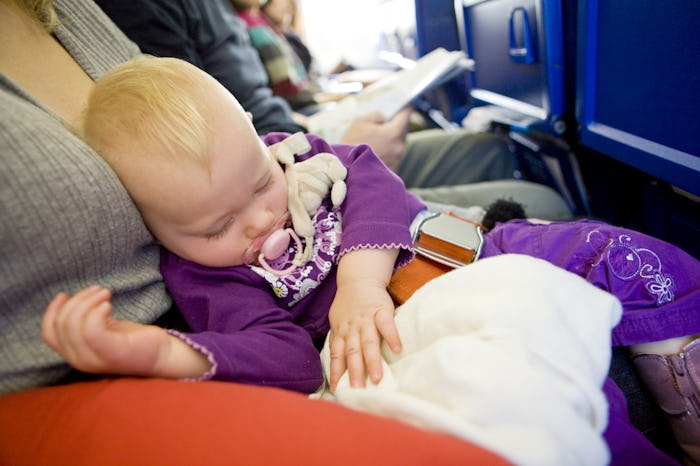Life

Here's When Should Replace Baby's Pacifier
At some point your baby's paci, binkie, pluggie — whatever you call it — will need replacing. Pacifiers go through a lot of wear and tear everyday; they get dropped, washed (maybe even in the dishwasher), chewed on, you name it, which means they can only last so long. Sure, you can keep it for sentimental reasons forever, but not for use, forever. Keeping a pacifier that needs replacing is simply not safe, and discussing what to look for is pretty important. So, when should you replace baby's pacifier?
Many people use pacifiers for their babies to reduce sudden infant death syndrome (SIDS), satisfy a baby's need to suck, and provides the infant a way to self-soothe, according to Web MD. There is no set timeline for the life of a pacifier like after two weeks or two months, for example. It has more to do with what the pacifier looks like, than how many days it's been in use.
As a mom of a colicky infant, I used them around the clock. Admittedly, I used to place five pacifiers in my daughter's crib at night so if one fell out of her mouth she could feel around for another one and pop it right in. Obviously, my pacifiers got a lot of use, they were cleaned and sterilized relentlessly, and over time, they didn't look so hot anymore. To be honest, they got kind of gross.
Jonas Sickler, marketing director at Consumer Safety, says one of the most important indicators that it's time to toss the paci is damage. "Even a baby with no teeth can eventually break down a pacifier, especially if the soother takes countless trips to the dishwasher," Sickler tells Romper. He explains that pacifiers are required to have ventilation holes, which can become weak spots. It's a good idea to check pacifiers out for these spots every so often. "If you see any rips that could result in pieces breaking off, replace it immediately."
The other big sign that it's time to ditch the binkie is that it's too small. "New parents may not be aware that pacifiers have age limits due to the size of your baby's mouth," Sickler says. "If you aren't sure what age yours is rated for, they are cheap enough to buy a new set."
There are only two sizes of pacifiers to choose from, 0 to 6 months and 6months to older, according to Baby Center. There are several different shapes, all of which come with a shield. If your baby can put the whole pacifier in it's mouth, shield and all, it's definitely time to look for a replacement or consider being done with pacifiers all together.
Additionally, Sickler recommends trashing the paci at the first sign of a tooth. "Baby teeth are sharp, and they can turn a soothing product into a choking hazard very quickly." I knew when my daughter started chewing on the rubber nipple that it was time to give the paci the boot. Replacing the paci is one thing, weaning your kid off of it is quite another. Thankfully, she was ready and was happy to give hers to the Paci Fairy.
You're probably already watching your baby like a hawk, so observing how they use the pacifier will be helpful. You can also look at the pacifier up close every so often to check for damage. Thankfully, pacifiers are no trouble to replace, and won't suck the life out of your bank account, unless of course, your baby is sharing them with the dog or something.